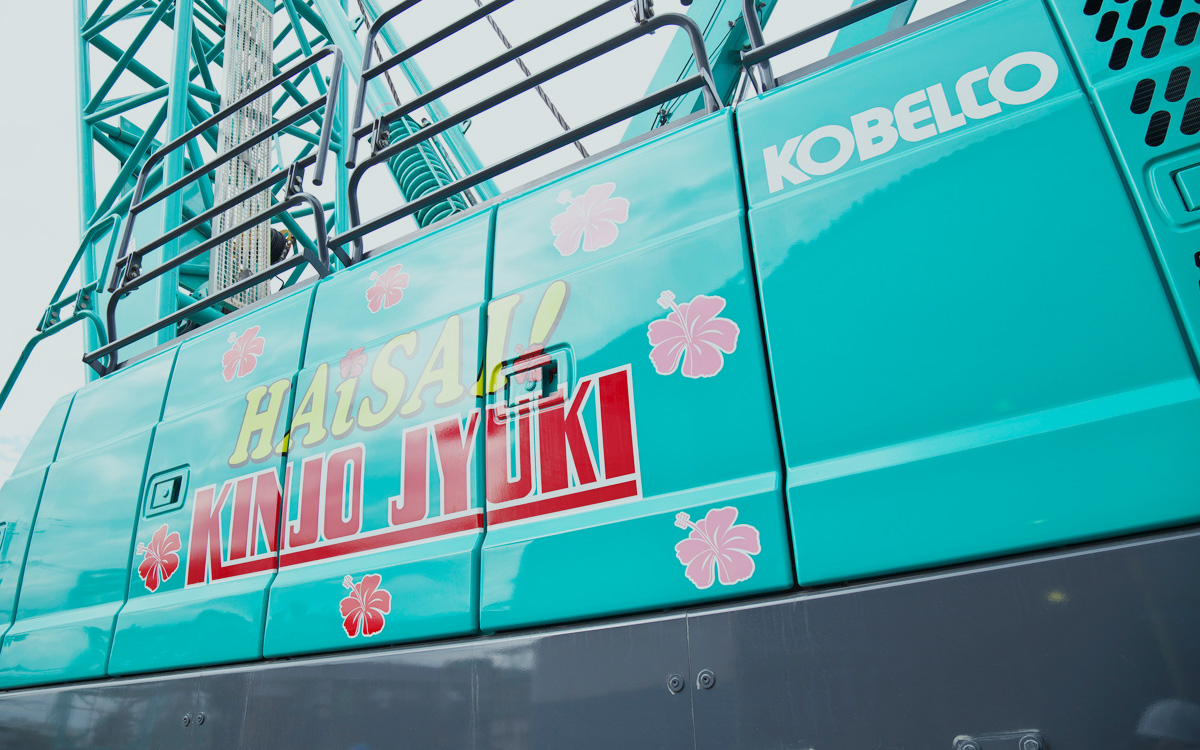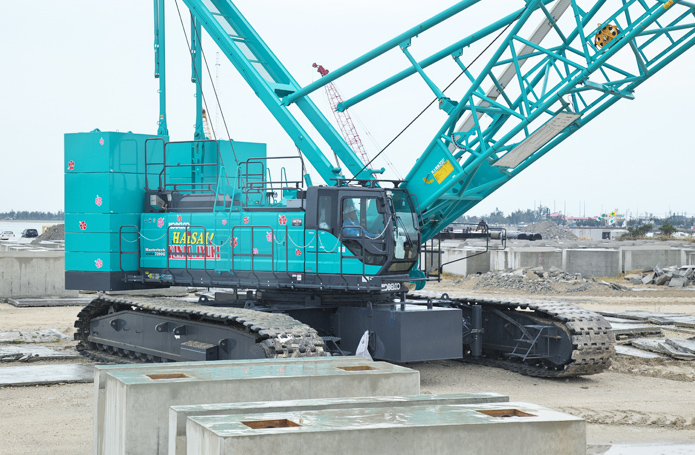
A day on site
February 2015
Cranes and those operating them
We talked to the executive managing director of Kinjyo Juki,
a prominent foundation builder in Okinawa, and to one of the crane operators.
 Mr. Nobukichi Nakata
Mr. Nobukichi Nakata
Crane Operator
Kinjo Juki Co., Ltd.
Veteran operator with 40 years of experience
At the work site we visited, we saw a Kobelco Mastertech 7200G crawler crane moving large concrete blocks for tetrapods, one after another. Actually, Kinjo Juki has only recently begun transporting concrete blocks for construction, and the newly acquired Mastertech 7200G has the capability of lifting up to 200t. This large crane is also eco-friendly. In recent years, the company has received more and more orders to build foundations for high-rise condo construction, and the piles used in those projects are naturally much larger and heavier, so the company anticipates larger cranes playing increasingly important roles on the work site.
Mr. Nobukichi Nakata operated the Mastertech 7200G at the site we visited. He’s a veteran operator with some 40 years of experience at Kinjo Juki. The company currently has 15-20 crane operators on the payroll, but at this site, basically, one man did the job. In fact, a single operator is sometimes assigned an entire job for a full day.

“We just bought this crane last December, so it’s only been on the job for about two months. I find it easy to operate, and it has worked well so far. And it’s easy to operate because I think Kobelco is constantly improving their cranes’ layout from the operator’s viewpoint. And the cranes continue to evolve.”
Does Mr. Nakata, an expert operator who has experience at many different work sites, find this kind of large crane difficult to operate?
“A crane is not difficult to operate just because of its size, but larger cranes do have more blind spots, so in that case I use the cameras and take special care when operating. Compared to my younger days, I think I’m more at ease now, I’m more aware of the size and weight of what I’m lifting, and I’m more concerned about safety now. So I’m more careful, take things a little slower, and never get in a rush.”
Cranes are indispensable on a foundation work site, and, along with Kinjo Juki experts, have successfully finished many a difficult project. We asked Mr. Nakata, who has spent years and years operating those cranes, about his attitude toward cranes and what the epitome of working with them was.
“Sometimes cranes are something like women (laughs). Small ones are nimble but need a lot of care. But as they get bigger, they get more massive and settle down. Just think of them the same way you’d think of a woman, and change the way you handle them according to what type of female they are, that’s all there is to it. (laughs) The true charm of my work? Well, it all comes down to the fact that I love what I do. When I am driving down the road in my car and see a building on the spot where we built the foundation, I remember what it was like working on that project. At that moment, I may think that was a tough job, but looking back I realize that this is a job worth doing.”
Kinjo Juki has guided many construction projects to successful completion in Okinawa’s severe natural surroundings, and the company will now do so with Kobelco’s cranes to help build a better future for Okinawa.